The Downfall of the Mighty Lydian King Candaules in Art
Suppose you are not satisfied with any of the historical or fantasy dramas out there lately where all kinds of slander, deception, and politicking...
Erol Degirmenci 2 March 2023
Have you ever wondered where the name of the continent Europe comes from? Meet Europa, a Phoenician woman who became the inspiration for the name of the entire continent. According to mythology, she was abducted by Zeus in the form of a bull and became the mother of the first king of Crete, ultimately giving rise to the Minoan civilization. But Europa’s story goes beyond just mythology – she has been a recurring subject in art, inspiring some of the most beautiful paintings and sculptures throughout history. Join us on a journey through time as we explore the fascinating story of Europa and her impact on culture and art.
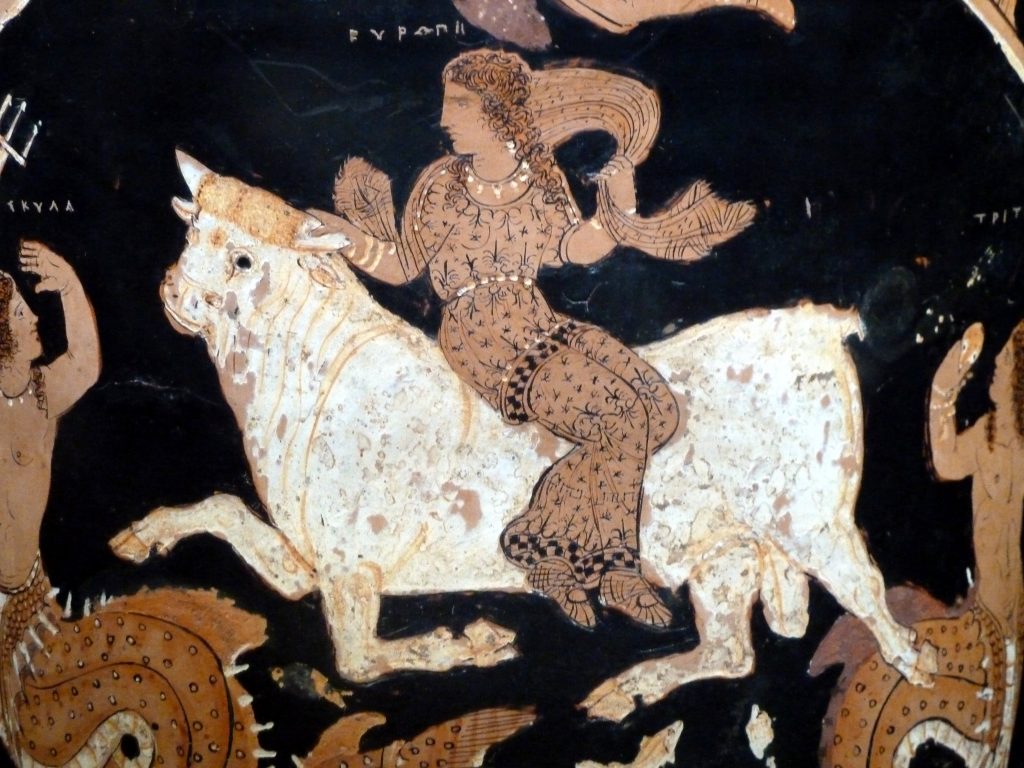
Paestum Red-Figure Chalice Krater Signed by Assteas, Europa on the Bull, 370-360 BC, Museum of Sannio, Benevento, Italy. Pinterest. Detail.
Europa was a Phoenician woman who had two brothers, Cilix (who gave his name to Cilicia in Asia Minor) and Cadmus who brought the alphabet to mainland Greece. Zeus became infatuated with Europa and according to the oldest Cretan stories recounting god’s numerous love affairs with women, Zeus approached the girl as a tame white bull who joined her herd. Europa, enchanted by the creature, climbed on his back to decorate his horns with flowers, but the mischievous god seized the opportunity and sprang into the ocean.
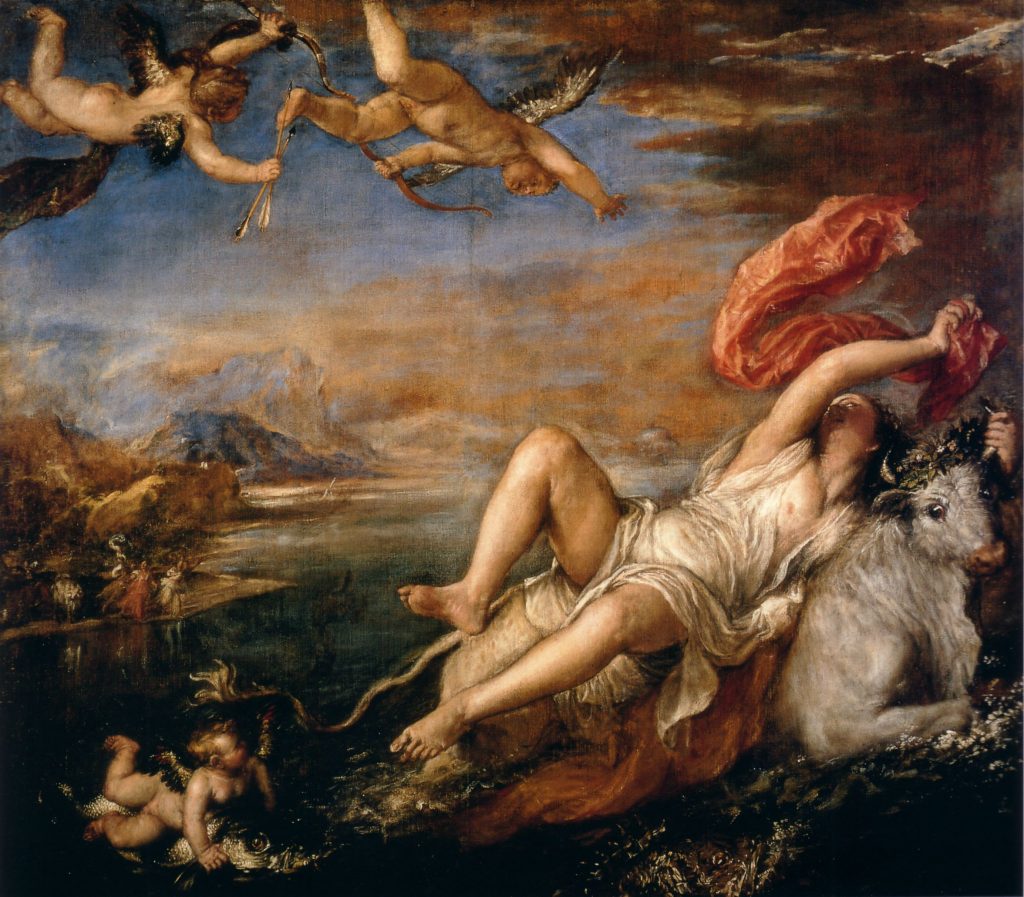
Titian, Rape of Europa, ca. 1560-1562, Isabella Stewart Gardner Museum, Boston, MA, USA. ARS Magazine.
Zeus swam across the water to reach the island of Crete, where he revealed his identity to scare Europa. She accepted him and his gifts (e.g. a necklace made by Hephaestus, a javelin that never missed, and even the constellation in the shape of a bull called Taurus). From their union their son Minos was born and became the first king of Crete. Historically, from this man, the first European civilization of Minoans took the beginning.
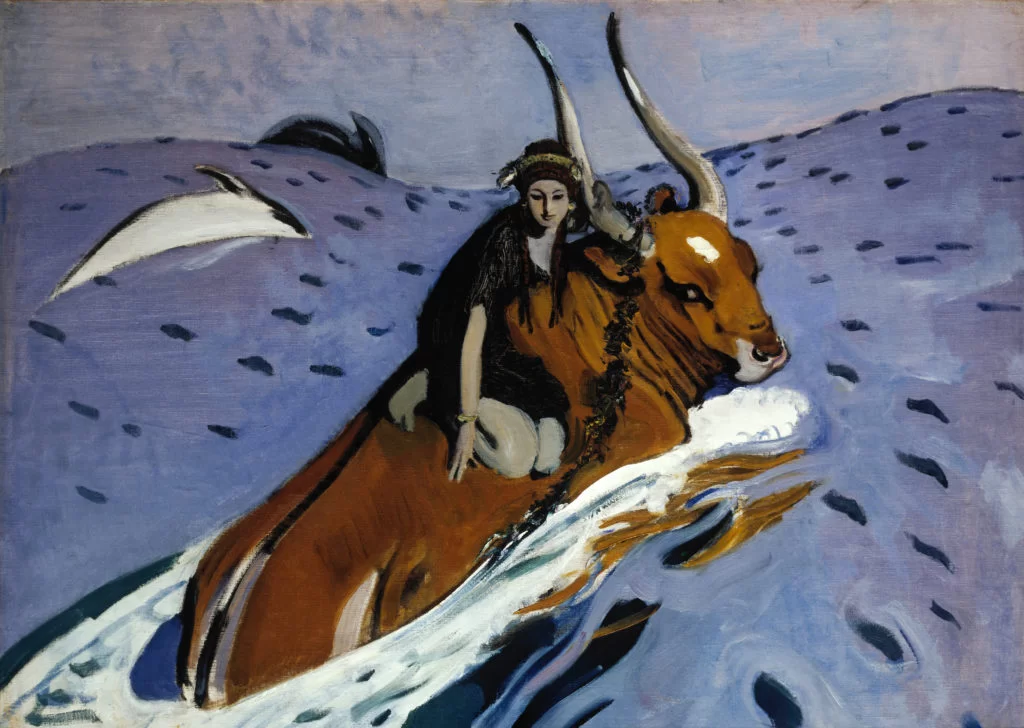
Valentin Serov, The Rape of Europa, 1910, The State Tretyakov Gallery, Moscow, Russia. Google Arts&Culture.
Ancient Greeks often identified lands or rivers with female figures. No surprise then, that in one of the Homeric hymns the name Europa is used to describe the western shore of the Aegean Sea. Moreover, Europa was believed to be the daughter of the earth goddess Gaia and was associated with the concept of fertility, prosperity, and abundance.
As a personification of the land, Europa represented the idea that the earth was a living and breathing entity, capable of nurturing and sustaining life. Her association with fertility and prosperity was rooted in the belief that the land was capable of providing for the people who lived on it, as long as they treated it with respect and care.
Europa’s story of abduction by Zeus also symbolized the idea that the land could be conquered and taken over by powerful forces. This aspect of her story reflected the reality of ancient societies, where wars were fought over fertile land and resources.
In art, Europa was often depicted in a pastoral setting, surrounded by animals and nature. In paintings, she is often a beautiful woman, adorned with various symbols of nature such as flowers, fruits, and grains. This emphasized her close connection to the land and her role in ensuring the abundance of crops and livestock.
Rape, or Abduction, of Europa, is a motif recurring in art. We have ancient vases, marble sculptures, and, of course, paintings. As with many stories from mythology, it often served as just a pretext to show a magnificent landscape, like in Claude Lorrain or Rembrandt.
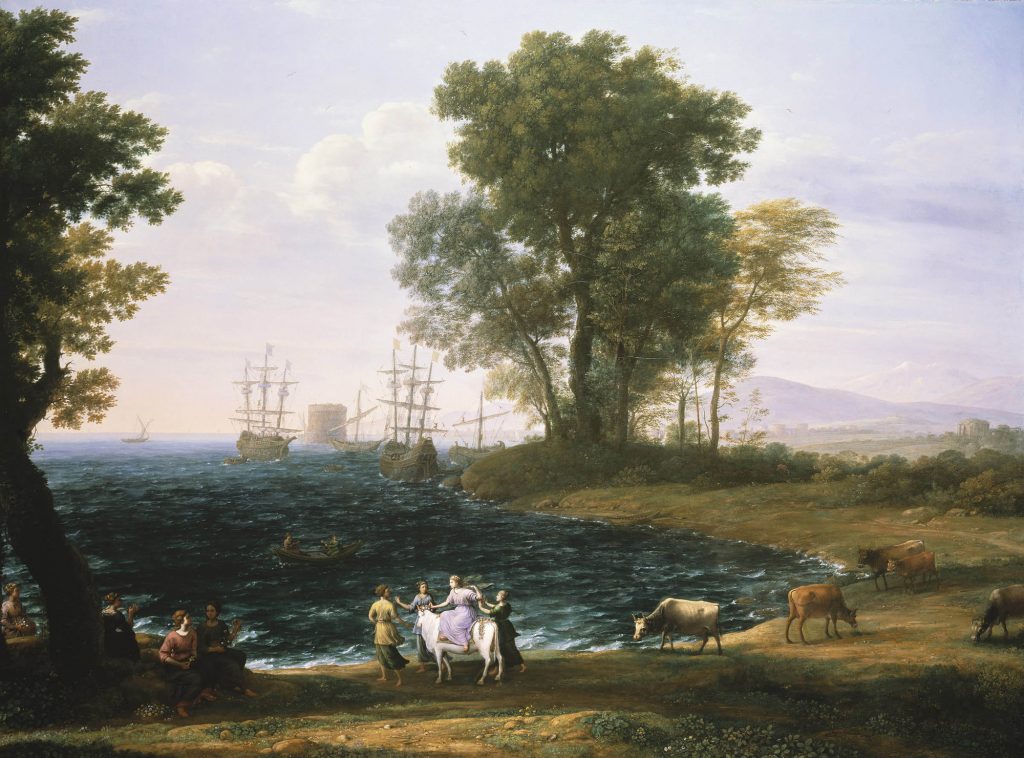
Claude Lorrain, Coast Scene With the Rape of Europa, 1600-1682, Royal Collection, Windsor Castle, UK. Wikimedia Commons (public domain).
Claude Lorrain’s painting Coast Scene with the Rape of Europa depicts a beautiful landscape with a herd of cattle and a group of people enjoying the scenery. However, upon closer examination, we see the figure of Europa being abducted by Zeus in the form of a bull, which is visible in the background. This painting is a prime example of how artists have used the myth of Europa’s abduction as a pretext to depict breathtaking landscapes.
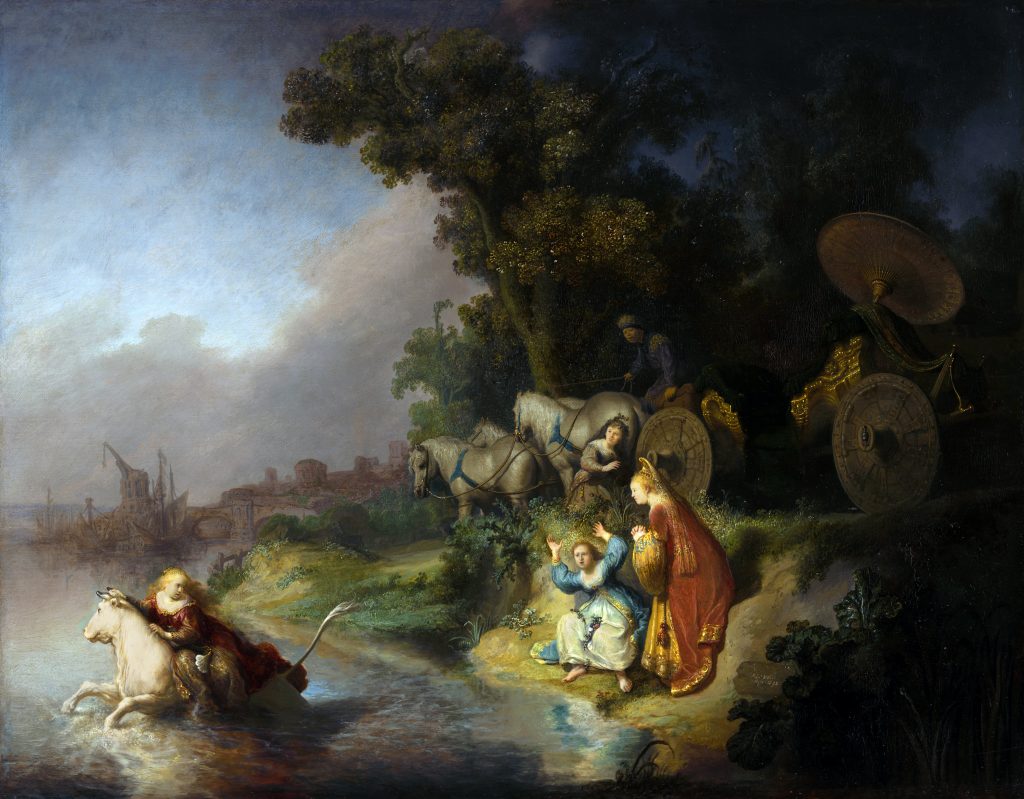
Rembrandt Harmensz van Rijn, Abduction of Europa, 1632, J. Paul Getty Museum, Los Angeles, CA, USA. Wikimedia Commons (public domain).
Rembrandt’s painting Abduction of Europa shows the moment when Zeus is carrying Europa away to Crete. The painting captures the tension and drama of the mythological story, with Europa appearing frightened and vulnerable as she is lifted into the air by the powerful bull. Rembrandt’s work is a testament to the enduring appeal of the story of Europa’s abduction. It has served as a source of inspiration to create powerful and emotionally charged works, like the one above.
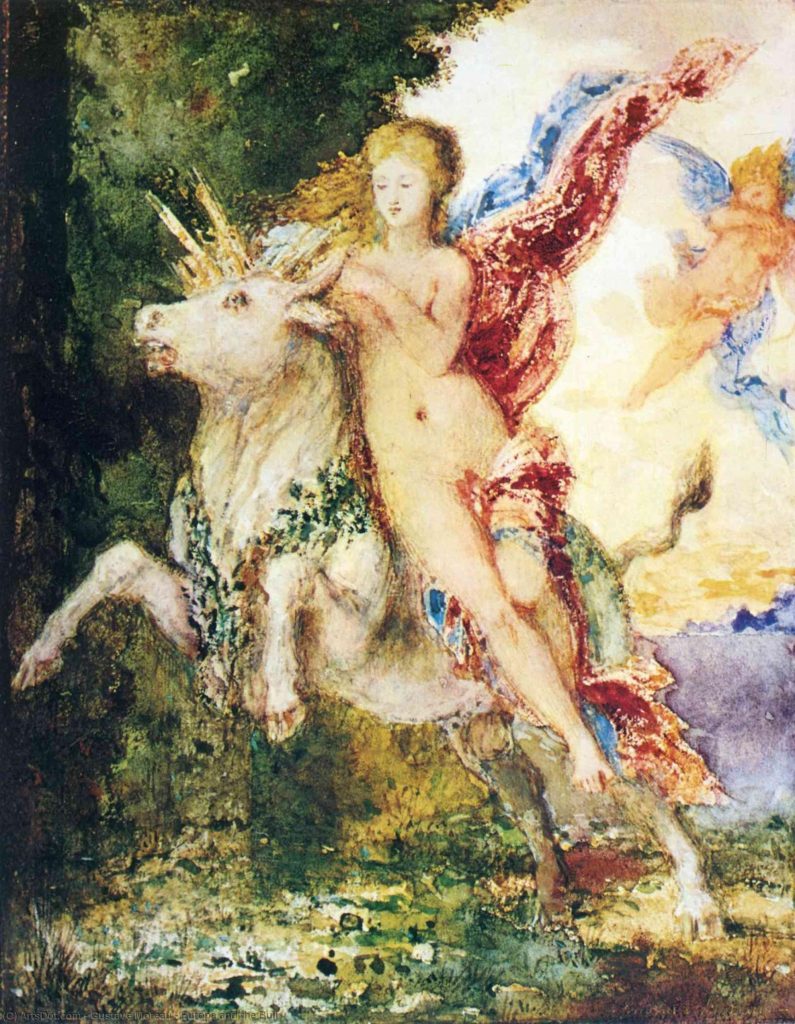
Gustave Moreau, The Abduction of Europa, 1869, Wadsworth Atheneum, Hartford, CT, USA. Wikiwoo.
In Gustave Moreau‘s painting The Abduction of Europa, we see Europa lying on the back of the bull, with a sense of resignation and acceptance of her fate. Moreau’s work reflects the 19th-century romantic fascination with ancient myths and legends. Also, it shows the idea of the femme fatale, a beautiful and dangerous woman who leads men to their downfall. Moreau’s depiction of Europa emphasizes her beauty and sensuality, as well as the exotic and mysterious qualities of the mythological story. Like many other artists before him, Moreau was drawn to the story of Europa as a powerful and emotionally charged subject that allowed him to explore themes of love, desire, and fate.
The story of Europa has been a fascinating and enduring part of mythology and art for centuries. From her mythical abduction by Zeus in the form of a bull to her role in the birth of the Minoan civilization, Europa has captured the imagination of people throughout history. Artists have used the story of Europa as a way to create visually stunning works that reflect the enduring appeal of this mythological figure. As we continue to explore the rich tapestry of human history and culture, we can look to Europa as a powerful symbol of beauty, mystery, and wonder.
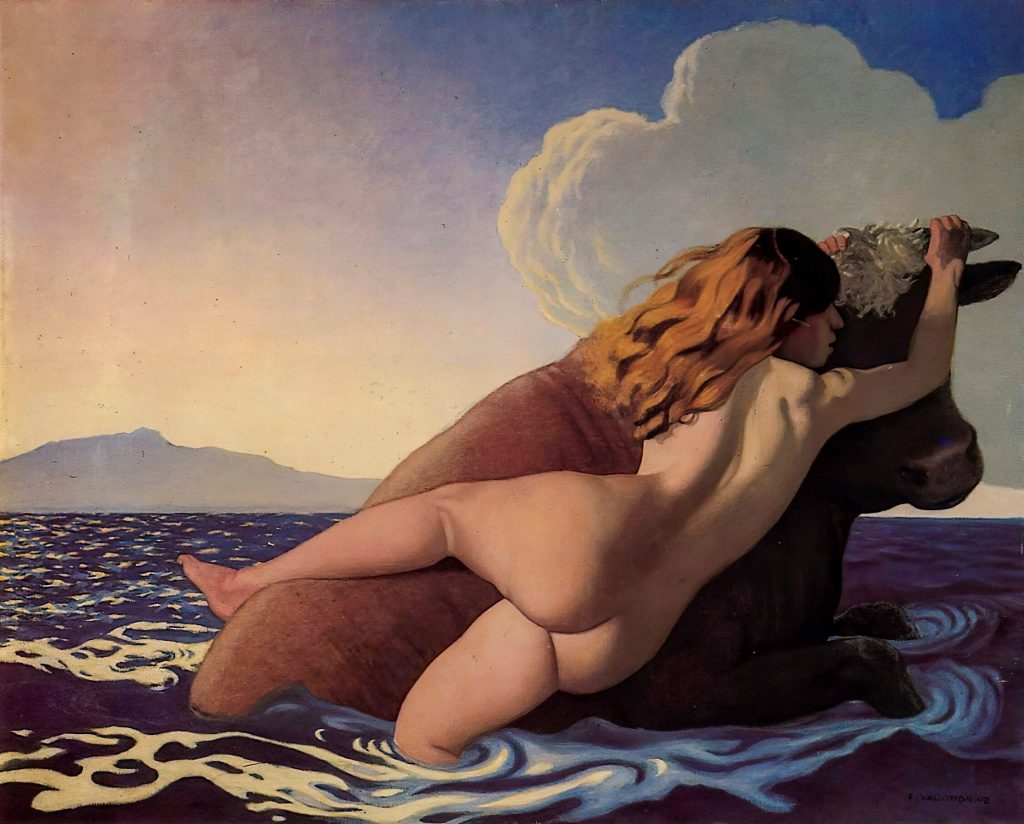
Félix Vallotton, Rape of Europa, 1908, Kunstmuseum Bern, Bern, Switzerland. Wikimedia Commons (public domain).
DailyArt Magazine needs your support. Every contribution, however big or small, is very valuable for our future. Thanks to it, we will be able to sustain and grow the Magazine. Thank you for your help!